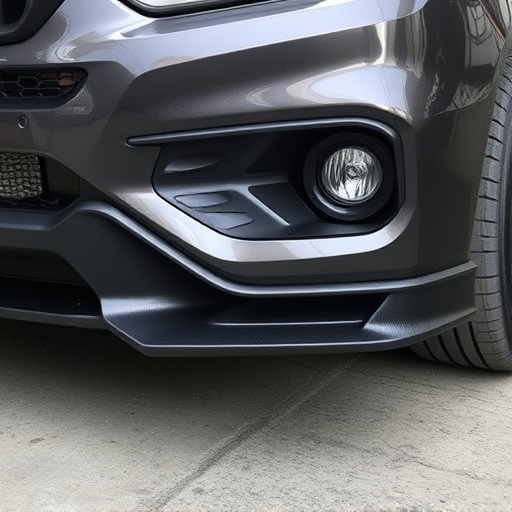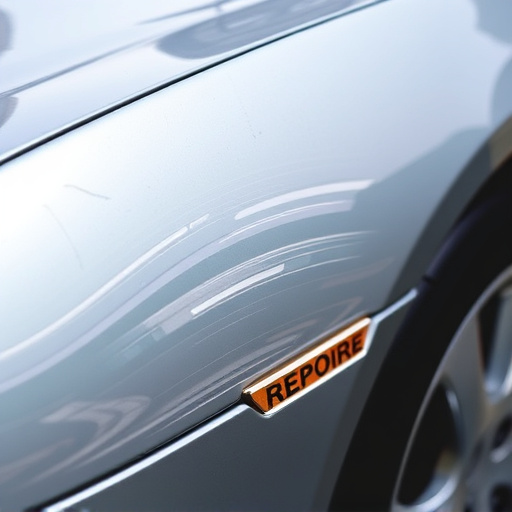In the event of a front-end collision, electronic diagnostics play a crucial role in modern vehicles by tracking sensor readings and system performance, providing vital insights into damage. Diagnostic codes, such as P0455 for power steering issues or SRS01/SRS02 for airbag deployment problems, guide repair technicians in assessing and repairing various components, from safety systems to car paint services. Advanced electronic diagnostics technology allows for precise assessments of all vehicle parts, ensuring structural integrity and high-quality restoration after collisions, ultimately leading to more effective, efficient, and cost-saving repairs.
After a front-end collision, understanding the electronic diagnostics is crucial. Modern vehicles are equipped with sophisticated systems that generate various codes post-incident, offering insights into potential damage and safety system activation. This article delves into the common diagnostic codes appearing after front-end collisions, elucidating their meanings. We explore how advanced systems interpret this data to assess vehicle integrity and enhance safety measures, leveraging electronic diagnostics as a powerful tool for accident analysis.
- Understanding Electronic Diagnostics After a Front-End Collision
- Common Codes and Their Meanings in Post-Collision Scenarios
- The Role of Advanced Systems in Interpreting Diagnostic Data
Understanding Electronic Diagnostics After a Front-End Collision

After a front-end collision, understanding electronic diagnostics becomes crucial for assessing damage and determining repairs needed. Modern vehicles are equipped with sophisticated onboard diagnostic systems that track and record various parameters during an impact. These electronic diagnostics provide valuable insights into the vehicle’s condition post-collision, aiding in accurate assessments and facilitating efficient vehicle body repair processes.
The data collected includes information about sensor readings, system performance, and potential fault codes. These diagnostics can reveal damage to components like sensors, control modules, or even minor issues with car paint services that may have been caused by the collision. Automotive repair technicians use this information to navigate the repairs, ensuring they are comprehensive and tailored to the specific needs of each vehicle, ultimately leading to safer and more reliable transportation.
Common Codes and Their Meanings in Post-Collision Scenarios

In the aftermath of a front-end collision, various diagnostic codes are often recorded by the vehicle’s electronic diagnostics system. These codes provide critical insights into the nature and extent of the damage, aiding in both safety assessments and subsequent auto body repairs. Common codes include those indicating sensor malfunctions, such as misalignment or malfunction of sensors responsible for monitoring steering, suspension, and braking systems. For instance, a code like P0455 (Steering Sensor Circuit) may appear, signaling a potential issue with the vehicle’s power steering system.
Another set of codes relates to airbag deployment and sensor functionality. Codes like SRS01 or SRS02 typically indicate airbag control module problems or sensor failures, which are crucial for accurate deployment during future collisions. Moreover, engine-related codes, such as P0300 (Random Engine Misfire), can suggest issues with fuel injection, ignition coils, or spark plugs, all of which are vital for optimal performance and efficiency. These diagnostic insights facilitate not only the assessment of car damage repair needs but also guide professionals in automotive collision repair to make informed decisions during restoration processes.
The Role of Advanced Systems in Interpreting Diagnostic Data

Advanced systems play a pivotal role in interpreting diagnostic data following a front-end collision. These systems go beyond traditional methods by seamlessly integrating electronic diagnostics into the collision repair process. They enable technicians to access and analyze real-time data from various sensors and modules within the vehicle, providing valuable insights into the extent of damage. This technology facilitates more precise assessments, ensuring that every component, from complex safety systems to seemingly minor parts like fender repairs or vehicle dent repairs, is thoroughly evaluated.
By leveraging these advanced diagnostics, collision repair specialists can make informed decisions, enhancing the quality of restoration services. Vehicle restoration, for instance, benefits significantly as technicians can identify subtle issues that might impact overall performance and safety. This not only ensures the structural integrity of the vehicle but also facilitates more effective and efficient repairs, ultimately reducing costs and turnaround times for customers undergoing vehicle dent repair or fender repair processes.
In the aftermath of a front-end collision, deciphering the associated electronic diagnostics is crucial for understanding the incident’s causes and extent. Common codes that surface post-collision offer insights into various systems’ responses, from airbag deployment to brake performance. Advanced systems play a pivotal role in interpreting this diagnostic data, enhancing safety measures, and facilitating more accurate accident reconstruction. By leveraging these electronic signatures, we can navigate the complexities of front-end collisions, ultimately fostering better vehicle design and enhanced road safety.













